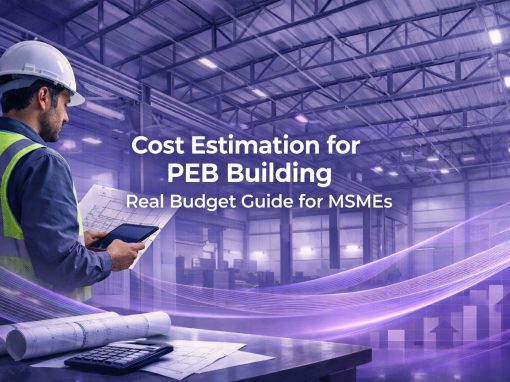Table of contents:
Every organisation requires to procure goods and services from other manufacturers to run its business. In the government sector, this involves a formal tender invitation, followed by an offer to purchase goods and services from another organisation or supplier. The tender invitation, in most cases is an open tender.
Based on the requirements, government departments, PSUs, and organisations release different types of tenders to procure goods and services from suppliers. Open tendering is one such method that invites application from eligible bidders to bid for providing their goods and services. These tender invitations are available on the eProcurement system CPP portal and can be viewed by all.
In the next sections, we will take a closer look at the meaning of open tendering, how it is different from other tendering types, the key limitations of open tenders, and what are the advantages of open tenders.
What is an open tender or tendering?
Open tender is a public procurement method used by both government and private organisations for acquiring goods, services, and infrastructure works at the lowest price. Open tender is also called open tendering.
It allows anyone interested to submit a tender to supply goods and services required. When a buyer department has a requirement, they publish (ePublish) the requirement on the portal. A detailed tender document is uploaded that contains the scope of work, budget, eligibility, tender fee and EMD details, due dates and other specifications. Usually, engineering and construction sector tenders are published as open tenders.
The purpose of an open tender is to create competition and minimise discrimination as it is a transparent process that facilitates fair play for suppliers. It also helps to create opportunities for emerging businesses to apply for new work.
There are two types of bidding involved in open tendering
- Open: Where the seal of the tender is open in full view
- Closed: Where seals are open in the presence of selective audience
Open tendering is also known as open competitive bidding, open solicitation or open competition.
Tenders for which all businesses are invited to join the bidding is called open tenders. In case the your confusion is on what is open tendering, then both open tender and open tendering meaning is the same.
What is a closed tender?
Of the four main types of tenders: open tender, closed tender, negotiated tender and single-stage or two-stage tender, open and closed tenders are the most commonly used.
A closed tender, also known as a limited tender is selective in nature and is open to only those bidders who are specifically invited to bid.
A tender that invites a specific set of people to bid and forbids any other businesses from bidding for the tender.
Difference between open tender and closed tender
Open and closed tenders are used by all government departments depending upon the nature of work. The tender submission procedure (for open tenders primarily) is usually online to keep the process quick, transparent, and fair. Given below is an comparison of open tender vs closed tender:
| Sr. No | Open Tender | Closed Tender |
| 1 | Open for bidding to the entire market | Not open to everybody but only for selective people through invitation |
| 2 | An organisation releases RFTs and whoever feels eligible can bid for the tender | An organisation asks for specific information from suppliers, and bidders are selected or rejected basis the information shared |
| 3 | More expensive as there are more participants | Cost effective in comparison to open tenders due to the lower documentation cost |
| 4 | Suited for general requirements in construction and engineering sector | Best suited for niche requirements that aligns with few firms |
Why is open tendering important?
The reason why an open tender is important is because it creates equal opportunities to all suppliers. The main advantage of open tendering is to minimise discrimination among the suppliers and create a competitive environment. Hence, the aim of this tendering process is to make available a specific product or services at the lowest possible price that provides value-for-money.
Remember, the key to winning a tender is in applying for relevant tenders that you are eligible for and at the right time.
What are the benefits of open tendering?
As mentioned above, an open tender enables any firm to submit their bids. Being the most common form of tendering, there are multiple advantages of open tendering.
Here are some of the benefits of open tenders:
Access to new suppliers
As open tendering is open for all suppliers to bid; it increases the chances of including sellers who can cater to the requirement with better quality and pricing. Open tenders also make it possible for the buyer to choose from a wider variety of options to accurately meet their needs. On the other hand, it provides individuals and organisations to get better opportunities and gain new experience to grow their business. Open tenders also provide an opportunity to new businesses to start government tendering.
More competitive
Every bidder in an open tendering process tries to win the contract with better quality goods/services within the lowest budget. This has a larger impact on the manufacturing of high-quality end products and efficient project management.
No nepotism
There is little scopes of nepotism and favouritism in an online open tendering process as it is transparent, and the bids are compared based on quality and price. This ensures that only the best bidders can bag the contract and even newcomers get a fair chance to compete and win. As a bidder, it is therefore important to understand the tender requirements in detail and quote a fair price in your tender application to increase your chances of winning.
What are the limitations of open tendering?
While open tendering is beneficial to both the parties, there are some limitations of open tenders. Some disadvantages of the open tendering process are:
Longer Procurement Cycles
- The open tendering process can be time-consuming due to the large number of bids submitted. With multiple suppliers competing, the evaluation and decision-making process can take longer, delaying project timelines.
- Example: For large government infrastructure projects, the process from publishing the tender to awarding the contract can take several months.
Extensive Documentation Requirements
- Suppliers are required to submit a wide range of documentation, such as financial statements, technical proposals, and compliance certificates. This can be a burden, especially for smaller businesses with limited resources.
- Example: A small construction company may struggle with gathering all the required legal and financial documents for a tender, potentially leading to disqualification.
High Competition
- While competition is a key benefit of open tendering, it also means that suppliers face intense competition from numerous other bidders. This can make it harder for small businesses to win contracts, as larger companies may have more resources to offer better prices or higher-quality proposals.
- Example: A small IT firm may find it challenging to compete with larger companies offering lower prices or more robust solutions for a government contract.
Focus on Price Over Quality
- Open tendering can sometimes lead to a focus on price rather than quality, as suppliers compete primarily to offer the lowest bid. This may result in selecting a supplier that meets the minimum requirements but fails to provide the best quality or long-term value.
- Example: A supplier offering the lowest bid for a construction project might compromise on materials or labor quality to meet the cost constraints.
Limited Supplier Relationship Building
- Since the process is open to any eligible supplier, there is limited opportunity to build long-term relationships between buyers and suppliers. This lack of relationship building can result in challenges in future negotiations or contract renewals.
- Example: If the buyer chooses a supplier based solely on price without considering their past performance, they may lack trust or understanding with the supplier in the future.
Compliance Risks
- Suppliers must comply with strict regulations, guidelines, and criteria for each tender. Missing any requirement, even by mistake, can disqualify a bid, making the process risky and requiring significant attention to detail.
- Example: If a bidder forgets to submit a specific compliance document or fails to meet a technical requirement, they may be disqualified, despite having a strong financial proposal.
What are the key requirements for open tendering?
There are some basic requirements that needs to be met for open tendering. The fundamental requirements are:
- Made open to all eligible and interested bidders
- Must be advertised both locally and globally
- Defined qualifications criteria
- Possess clear technical specifications
- Clear tender evaluation criteria for bidders
- Must be awarded to the bidder citing the lowest cost (when meeting other details as specified)
Types of bidding methods in open tendering
We have differentiated the bidding methods above in open and closed methods. We are bring some detailed understanding on all the bidding methods used in open tendering, each suited for different types of projects.
- Sealed Bids: In sealed bidding, suppliers submit their bids in sealed envelopes. This method ensures that no bidder is aware of the competition, promoting fairness.
- Electronic Bidding (eBidding): This method involves submitting bids online through eProcurement platforms, streamlining the process and reducing paperwork.
- Two-Stage Bidding: Used for complex projects, two-stage bidding involves an initial technical proposal followed by a financial bid submission.
- Negotiated Bidding: In this method, the buyer engages in negotiations with selected bidders to finalize terms before awarding the contract.
- Competitive Dialogue: This is used for projects with complex specifications, where bidders engage in discussions with the buyer to develop the best solution.
Steps to win an open tender
When looking at winning government contracts, these steps will ensure that your documents are in place and you are applying to the right opportunities.
- Review your existing processes to ensure you have all the things in place to deliver a product or service effectively. For example, ensure you have a Class III DSC to apply for eTendering.
- While continuous improvement is essential to deliver efficiently, it is always a good idea to take feedback from buyers on your shortfalls and rectify the same. If your tender application is rejected, request for feedback to understand the reasons for tender rejection.
- Plan and follow an effective tendering process. Invest time and resources to apply for open tenders. Most businesses who are successful in bidding follow a definite tendering process.
- Ensure that you qualify for an open tender before you start your submission. Check that you have a unique proposition to present in your goods/services and at a competitive price within the buyer’s budget.
- Collate all documents required for submitting the tender application. For example, check if a tender cover letter is required, ensure the fees and EMD are paid and receipts attached, check if the BoQ is properly filled in etc.
- Seek to know about your buyer’s organisation and align, if possible, to their vision and values for more visibility. People like to do business with organisations who think in similar ways.
Emerging Trends in Open Tendering
The open tendering process is evolving with advancements in technology, sustainability, and inclusivity. Key emerging trends include:
- Digital Transformation and eProcurement: The shift to eProcurement systems streamlines bid submission, tracking, and communication, enhancing efficiency and transparency.
- Artificial Intelligence in Tender Evaluation: AI automates and improves the evaluation process, reducing errors and bias by analyzing technical and financial bids faster.
- Sustainability and Green Procurement: Growing focus on eco-friendly solutions in tenders, with requirements for sustainable materials and energy-efficient practices.
- Blockchain Technology: Blockchain ensures transparency and security by tracking each step of the tendering process, preventing tampering.
- Supplier Diversity and Inclusion: Emphasis on promoting diversity by encouraging participation from minority-owned, women-owned, and small businesses.
- Integrated Contract Management: Adoption of contract management software integrates with eProcurement systems, streamlining contract monitoring and compliance.
- Data Security and Privacy: Increased focus on securing sensitive procurement data and ensuring privacy amid the rise of online bidding.
Conclusion
Open tenders are the most used tendering process by government bodies and PSU units. To get information on active tenders and stay updated on the new tender releases, you can register on government portals.
Open tendering plays a crucial role in ensuring transparency, fairness, and competitiveness in the procurement process. By providing equal opportunities for suppliers of all sizes, it encourages better pricing, higher quality, and innovation. However, the process does come with challenges such as longer procurement cycles, extensive documentation, and intense competition.
Despite these challenges, emerging trends like digital transformation, AI in evaluation, and sustainability are reshaping open tendering, making it more efficient, transparent, and inclusive. As organizations continue to embrace these trends, the process will evolve to meet modern demands and ensure fair competition, creating opportunities for businesses to grow and thrive.
For suppliers, understanding the requirements, preparing a competitive bid, and staying informed about trends can significantly improve their chances of success in open tendering. By adapting to these changes and strategically positioning themselves, businesses can benefit from open tendering opportunities and secure valuable contracts.
You can also register on B2B platforms like Tata nexarc to get updates on the latest tenders (check Tenders & Quotations to find relevant tenders by industry, location, value and other specifications).
Disclaimer: The information provided is based on general guidelines and may vary depending on the specific tendering authority or platform. Always refer to the official tender documents for accurate and detailed requirements.





ओपन टेंडर में किस सामान का ज्यादा काम रहता है
ओपन टेंडर में क्या लाइसेंस की भी जरूरत पड़ती है या कोई बिना लाइसेंस के भी हिस्सा ले सकता है किस-किस डॉक्यूमेंट की जरूरत पड़ती है कृपया बताएं